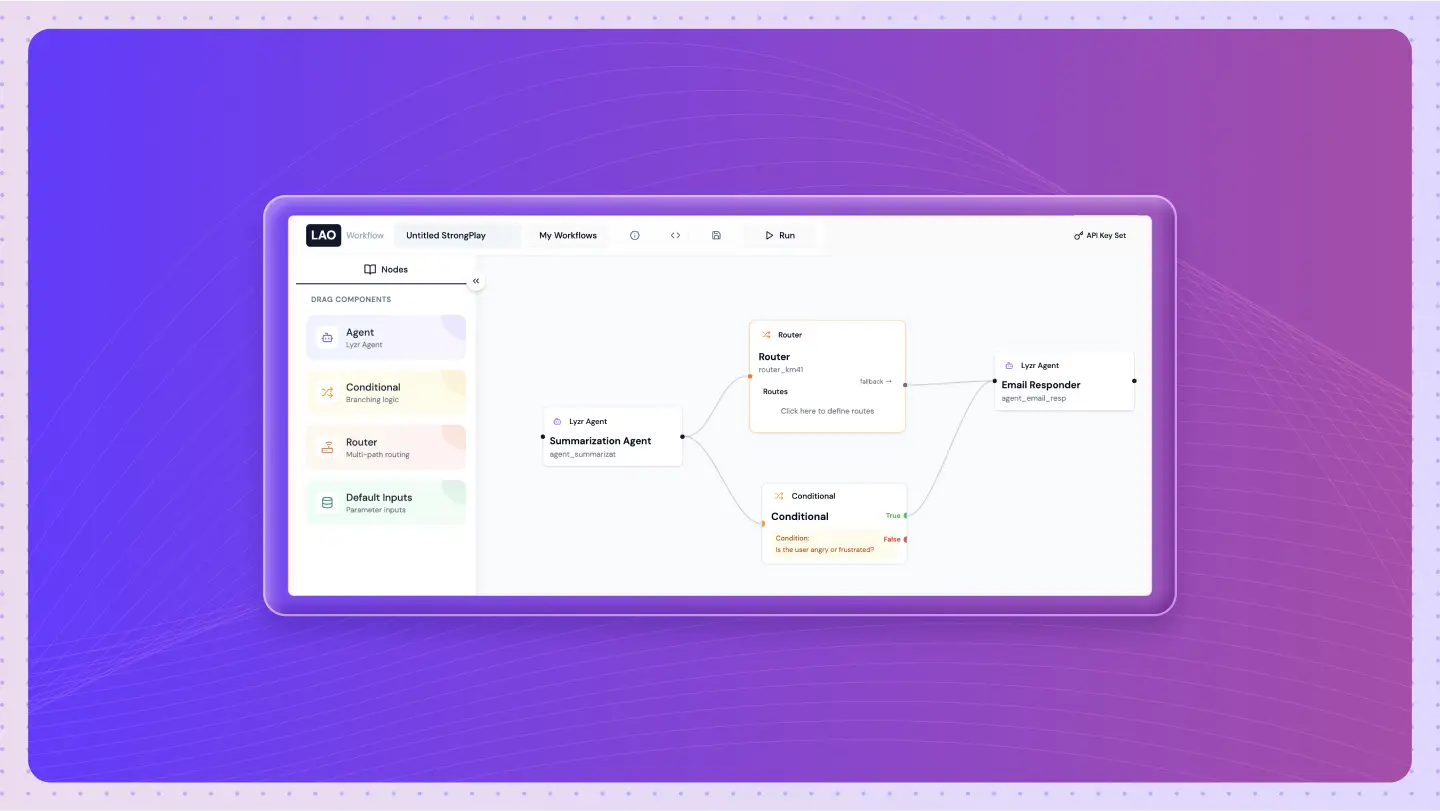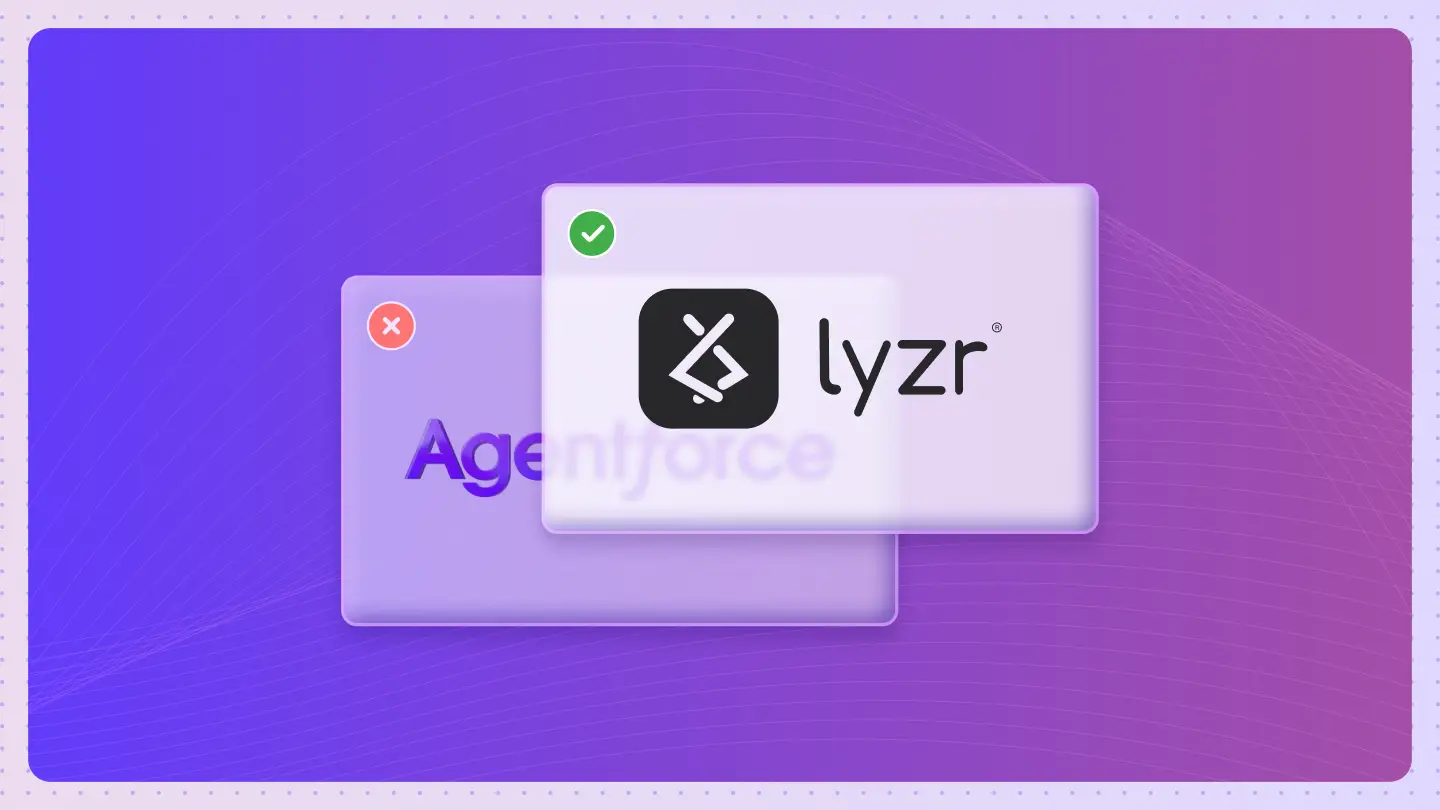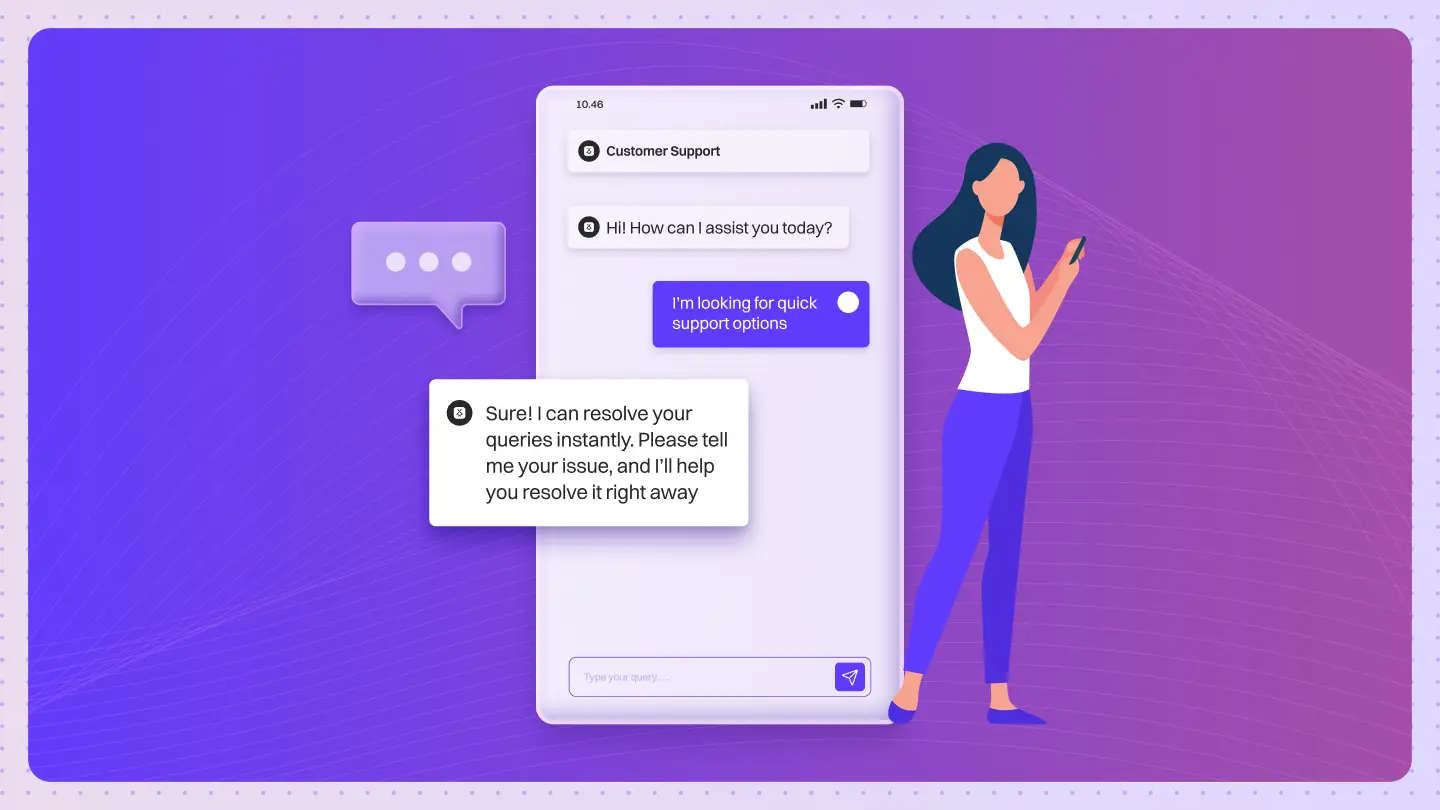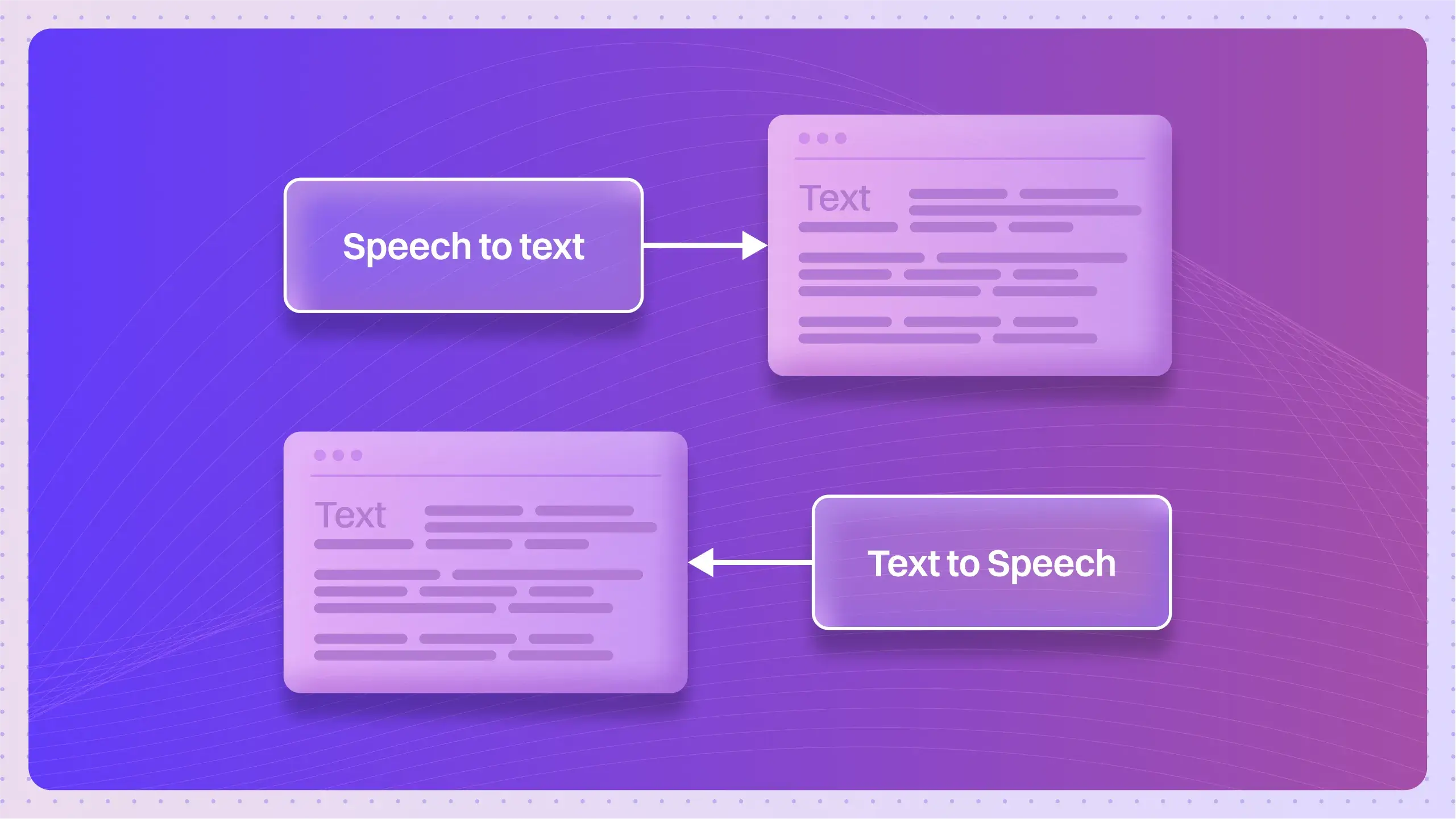Table of Contents
ToggleYou’ve probably seen the output, a chatbot answering questions, an AI summarizing reports, or a virtual assistant helping teams run daily tasks. But what’s happening underneath?
It’s not just one model doing everything. It’s a group of AI agents working together, each handling a different part of the process. Like a well-run kitchen during dinner rush.
Someone’s chopping, someone’s cooking, someone’s plating. But unless they’re coordinated, the dish never makes it to the table. A clear structure, with well-defined roles and organization, is essential in agent orchestration to ensure efficient coordination and reliable operation.
This coordination is where agent orchestration comes in.
It’s how different agents, each with a narrow skill or role, work together as a system to complete complex tasks. And as AI agents become more capable, the need to orchestrate them properly is no longer optional. It’s the difference between a bunch of smart bots… and a functioning AI workflow.
In this blog, we’ll break down what agent orchestration really means, why it matters, the different types you’ll run into, and how to build agentic systems that actually work.
Let’s get into it.
What is AI Agent Orchestration?
Agent orchestration is the process of coordinating how multiple AI agents work together to complete a task. Orchestration often involves role based agents, each assigned specific roles within the workflow, such as retriever or injector to handle different subtasks and facilitate collaboration.
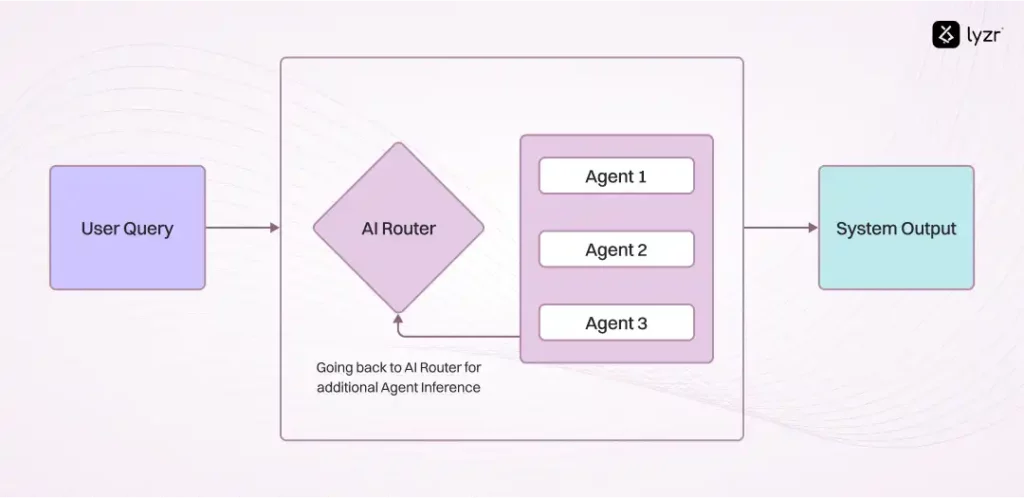
Think of a customer onboarding workflow in a bank.
One agent verifies documents, another checks credit scores, a third agent generates the agreement, and a final agent sends the welcome email. Each agent works independently but in a fixed order, passing the output to the next.
Orchestration is what ensures this chain runs without manual triggers or confusion, managing timing, dependencies, and data flow across agents. This highlights the ability of orchestration to coordinate and manage multiple agents efficiently.
This approach makes it easier to scale, debug, and improve agent workflows, since each agent handles a focused job and the orchestration logic controls how they all fit together.
Why is it important?
When AI agents operate in isolation, they can only handle narrow, single-step tasks. But real-world problems usually span across multiple steps, systems, and decisions. Agent orchestration makes it possible to build multi-step, intelligent workflows, where each agent does its job and hands off to the next without breaking the flow.
This orchestration capability enables complex, coordinated workflows that would be impossible for isolated agents to achieve.
By leveraging the distinct capabilities of each agent, such as improved coordination and adaptability, orchestration enhances the overall performance of AI systems. Decision making becomes a core component, allowing agents to analyze data, plan, and optimize their actions collaboratively within dynamic environments.
A Quick Story
A fintech startup wanted to automate loan approvals. They built individual agents, one to collect user data, one to pull credit reports, and another to draft the final approval document.
Individually, the agents worked fine. But users kept getting stuck mid-way. One form wouldn’t trigger the credit check, or the approval document would be generated before all data was in. The problem wasn’t with the agents, it was with how they worked together. In multi-agent orchestration, conflict resolution mechanisms are essential to resolve disagreements or conflicting actions between agents.
Once the startup introduced orchestration logic, the process became predictable, reliable, and hands-free. Feedback loops can also be implemented to continuously improve the orchestration process and agent collaboration.
A Real-World Example
Without orchestration, agents may overlap, trigger too early, or run with missing data. With orchestration, each agent runs in a planned sequence, only when conditions are met.
By orchestrating multiple specialized agents, each part of the workflow is handled by the most suitable agent, increasing efficiency and accuracy.
Managing interactions between agents is crucial to maintain workflow efficiency and prevent errors. Agent interactions are a key factor in successful orchestration, ensuring that information is shared and tasks are coordinated effectively.
Types of Agent Orchestration
Reading about orchestration is one thing, but seeing it work is another. The demo below walks through four powerful orchestration techniques such as Sequential, DAG, Managerial, and Hybrid and shows how a platform like Lyzr can simplify the creation of complex, multi-agent systems.
Watch how different agents are coordinated to handle sophisticated tasks, turning abstract concepts into a practical workflow.
1. Centralised Orchestration
In centralized orchestration, a single agent or a central controller manages all the other agents in the system. This central controller, often referred to as a single orchestrator or orchestrator agent, is responsible for managing workflows, coordinating tasks, and ensuring seamless execution among multiple AI agents.
It assigns tasks, controls the flow of data, and makes key decisions about who does what and when. This setup is easier to build and works well when a single point of control is needed. It is especially useful for predictable, linear workflows where all decisions can be handled from one place.
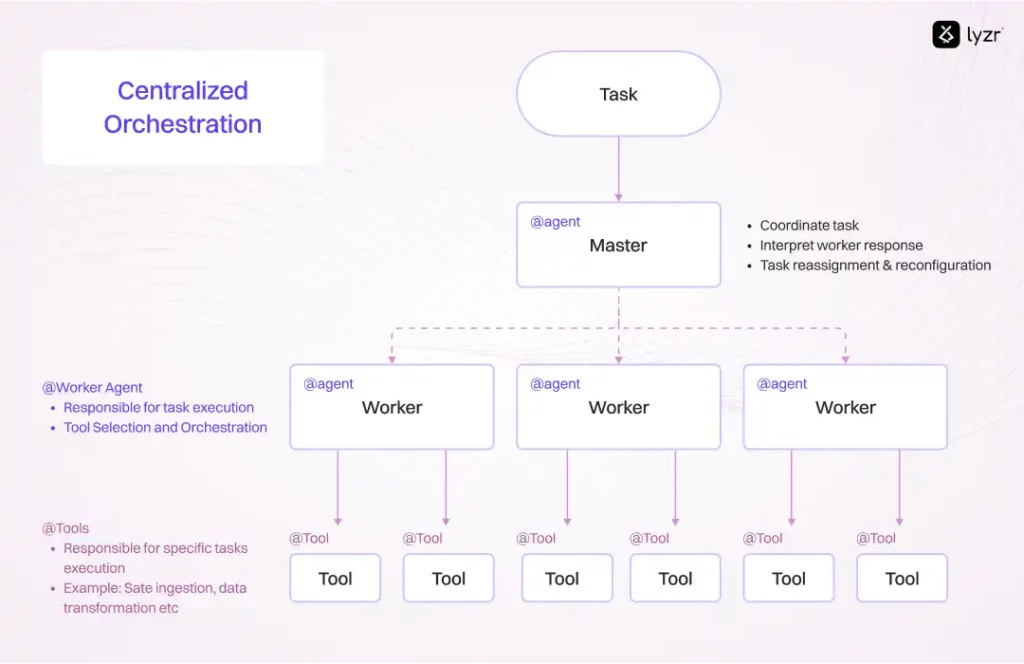

2. Decentralized Orchestration
In decentralized orchestration, there is no single master agent. Each agent works on its own, making decisions based on the information it has and by communicating with other agents.
Effective agent development is essential for enabling agents to operate autonomously within decentralized systems. Planning plays a crucial role in ensuring agents can coordinate effectively without a central controller. They coordinate with each other to complete tasks and reach the overall goal of the system. This approach is more flexible and can adapt better to changes or failures in real time.
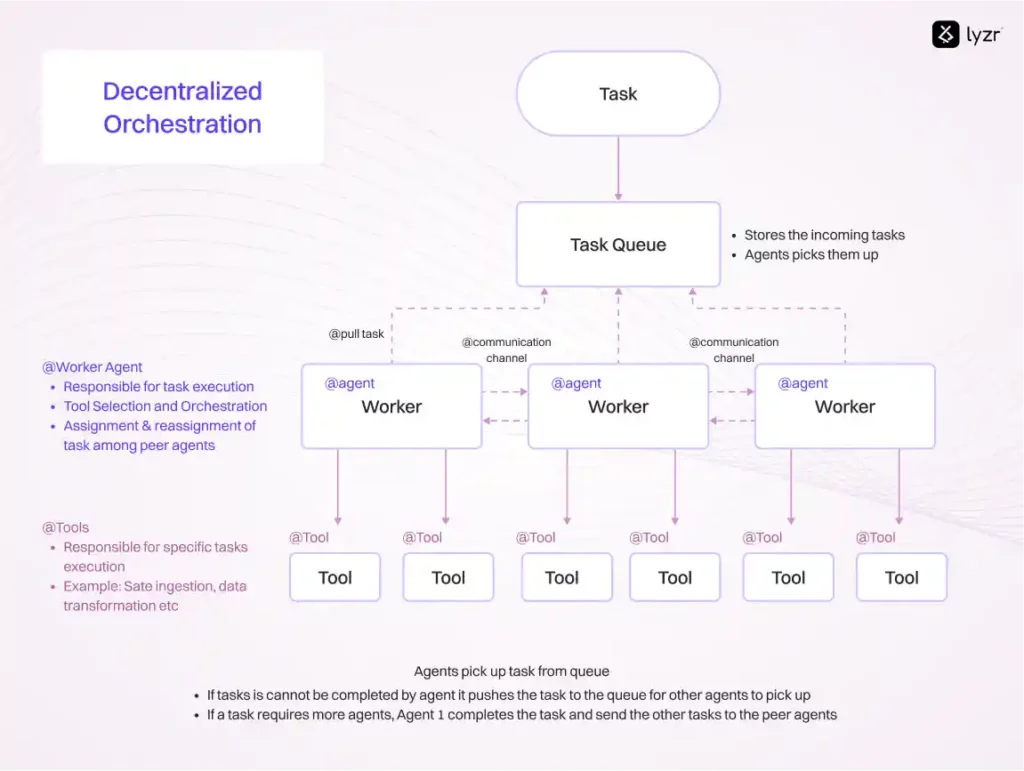

3. Hierarchical Orchestration
Hierarchical orchestration blends centralized and decentralized models. Agents are arranged in layers, where higher-level agents guide or supervise lower-level ones. This approach can be actions based, with higher-level agents coordinating and managing the actions of lower-level agents according to system context or business logic.
Function calling enables agents within the hierarchy to execute specific operations or interact with external tools as needed. While each level can make its own decisions, the agents at the top can influence or override actions taken below. This setup offers a balance between control and flexibility, making it useful for complex systems with different levels of responsibility.
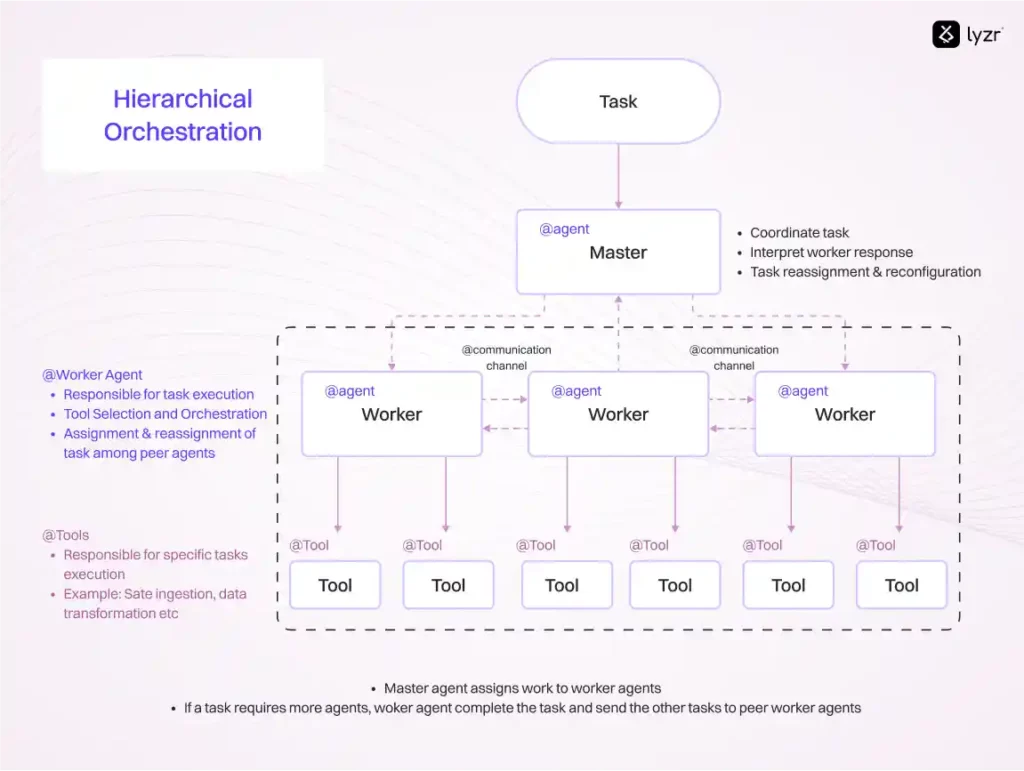

4. Federated Orchestration
Federated orchestration is used when separate systems or organizations, each with their own AI agents, need to work together. Instead of a central controller, agents from different groups coordinate based on shared rules or protocols. Integrating third party agents within these frameworks enhances flexibility and interoperability, allowing diverse agent services to participate in the collaboration.
External systems can also be incorporated into federated orchestration, enabling dynamic interactions and scalability across complex environments.
Seamless integration is crucial for effective collaboration between independent systems, ensuring that all components work smoothly together. Each system remains independent, but the agents collaborate by following agreed standards for communication and data sharing. This model is ideal when control is distributed across teams, departments, or partners.
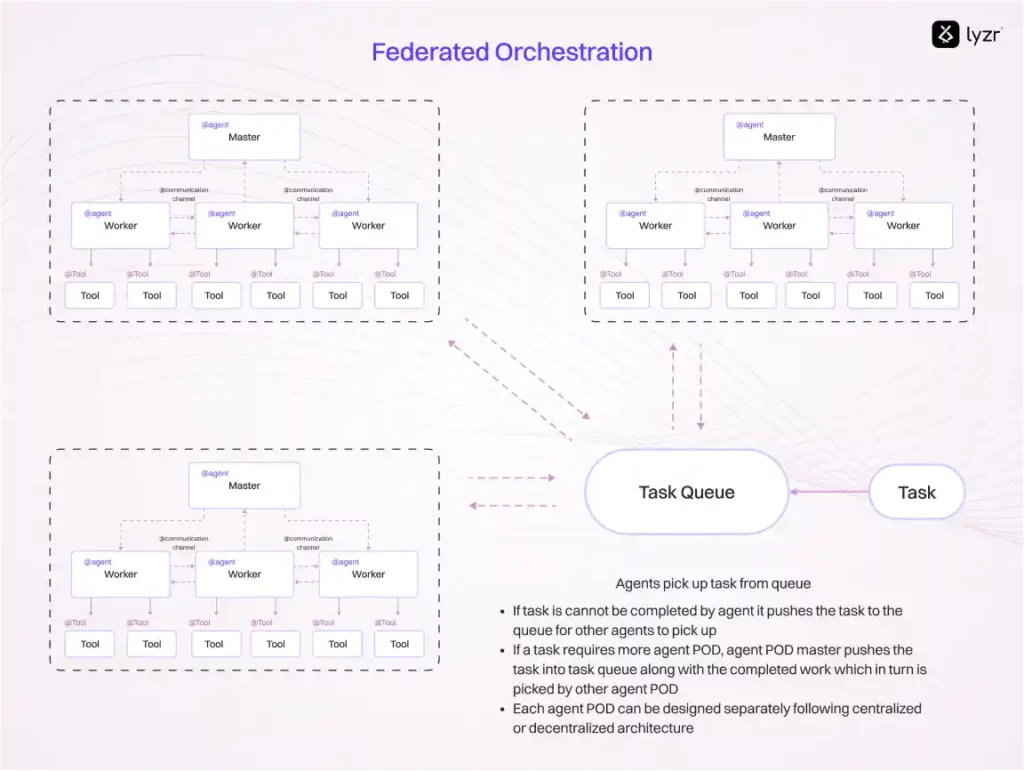

Top 5 Tools for AI Agent Orchestration
There’s no shortage of frameworks for building and orchestrating AI agents. But not all of them are built with production use, enterprise needs, or non-developers in mind.
These tools are increasingly critical for supporting business applications and ai applications by enabling efficient operations and processes across industries. Here’s a quick comparison of the top tools in the space, and how they stack up on features that matter.
| Feature | LyzrAI | LangChain | CrewAI | Autogen | MetaGPT |
|---|---|---|---|---|---|
| No-code Agent Builder | ✓ | ✗ | ✗ | ✗ | ✗ |
| Multi-Agent Orchestration | ✓ | ✓ | ✓ | ✓ | ✓ |
| Native Deployment to AWS, Azure, GCP | ✓ | ✗ | ✗ | ✗ | ✗ |
| Built-in Safety & Guardrails | ✓ | ✗ | ✗ | ✗ | ✗ |
| Real-time Monitoring & Logs | ✓ | ✗ | ✗ | ✗ | ✗ |
| Auto-scaling Infrastructure Support | ✓ | ✗ | ✗ | ✗ | ✗ |
| Enterprise-Ready Access Controls | ✓ | ✗ | ✗ | ✗ | ✗ |
When comparing these tools, it’s important to consider security features such as access controls, data protection, and infrastructure safeguards, which are essential for robust agent orchestration.
These platforms empower the developer to build, customize, and deploy agent workflows tailored to specific needs. They also integrate foundation models, large language models, machine learning models, ai models, and generative ai as core technologies, powering advanced orchestration, reasoning, and automation capabilities.
Start Building an Agentic System with Lyzr
Lyzr is a low-code, enterprise-ready platform designed to help you create and deploy intelligent AI agent workflows securely and efficiently. Lyzr empowers organizations to create agentic solutions that can solve complex problems across various tasks and different aspects of business operations.
To see how these orchestration principles are applied in a real-world business scenario, explore our comprehensive Sales Playbook , which breaks down multi-agent workflows for automating the entire sales development process.


- Fast & flexible orchestration: With built-in support for sequential flows, Directed Acyclic Graphs (DAG), managerial orchestration, and hybrid patterns, Lyzr adapts to both predictable pipelines and dynamic, evolving workflows.
- Safety and compliance baked in: Each agent is protected by input filtering, bias and toxicity checks, privacy safeguards, and audit-ready logging, ensuring trustworthiness by design.
- Low-code, high control: Mix-and-match no-code Studio builder with REST API and SDK support. Both technical and non-technical users can collaborate seamlessly in the Agent Studio GUI.
- Tool use and integration: Lyzr enables tool use by integrating a wide range of tools for automating repetitive tasks, supporting data analysis, and enhancing agent autonomy.
- Code interpreter and visualization: The platform features a code interpreter that allows agents to execute Python code, generate visualizations such as bar charts, and perform advanced data analysis directly from uploaded files.
- Enterprise-grade deployment: Deploy agents on AWS, Azure, GCP, or on-prem. Lyzr also supports multi-cloud and on-prem flexibility through AWS Marketplace integration. The platform supports multiple agents, specialized agents, and seamless integration with ai systems for scalable, collaborative solutions.
Conclusion: Your Next Step into the Agentic Future
As we’ve seen, the move towards agentic workflows represents a fundamental shift in how businesses operate. This isn’t just a glimpse into the future; it’s the next practical step for any organization looking to automate complex processes and gain a true competitive edge.
The key to unlocking this potential lies in having the right tools to build upon. Whether you’re looking to consult on a strategy or start building right away, Lyzr provides a clear path forward.
- To explore custom workflow automation: If you’re ready to see what’s possible for your business, come speak to us at Lyzr. We are happy to walk you through a tailored solution.
- To start building on your own: If you’re looking to get hands-on, explore our pre-built agents on Lyzr Studio. We have a range of powerful agents ready for banking, sales, marketing, customer support, and more.
As a key player in agent orchestration, Lyzr is at the forefront of enabling organizations to solve complex problems with advanced AI systems built for continuous improvement.
FAQs
1. What is the purpose of an orchestrator agent?
The purpose of an orchestrator agent is to coordinate multiple AI agents, assign tasks, and manage their interactions. Instead of one agent handling everything, the orchestrator ensures collaboration, reduces duplication, and improves overall task efficiency.
2. How does AI agent orchestration work?
AI agent orchestration works by using a central agent (the orchestrator) to break down complex workflows into smaller tasks and assign them to specialized agents. This setup ensures better scalability, faster execution, and more reliable outcomes.
3. What are AI agent orchestration tools?
AI agent orchestration tools are platforms or frameworks that help manage the communication, task assignment, and monitoring of multiple AI agents. Examples include LangGraph for hierarchical agents and Lyzr Agent Studio, which offers no-code orchestration for enterprises.
4. How to orchestrate AI agents effectively?
To orchestrate AI agents effectively, organizations need a framework that supports task delegation, monitoring, and feedback loops. The orchestrator agent assigns roles, ensures communication between agents, and integrates with business systems for smooth execution.
5. What are agent orchestration frameworks?
Agent orchestration frameworks provide the structure for building, deploying, and managing multiple AI agents. They include features like task routing, memory management, and communication layers. Popular examples are LangGraph for hierarchical orchestration and Lyzr Agent Studio for enterprise orchestration.
Book A Demo: Click Here
Join our Slack: Click Here
Link to our GitHub: Click Here

